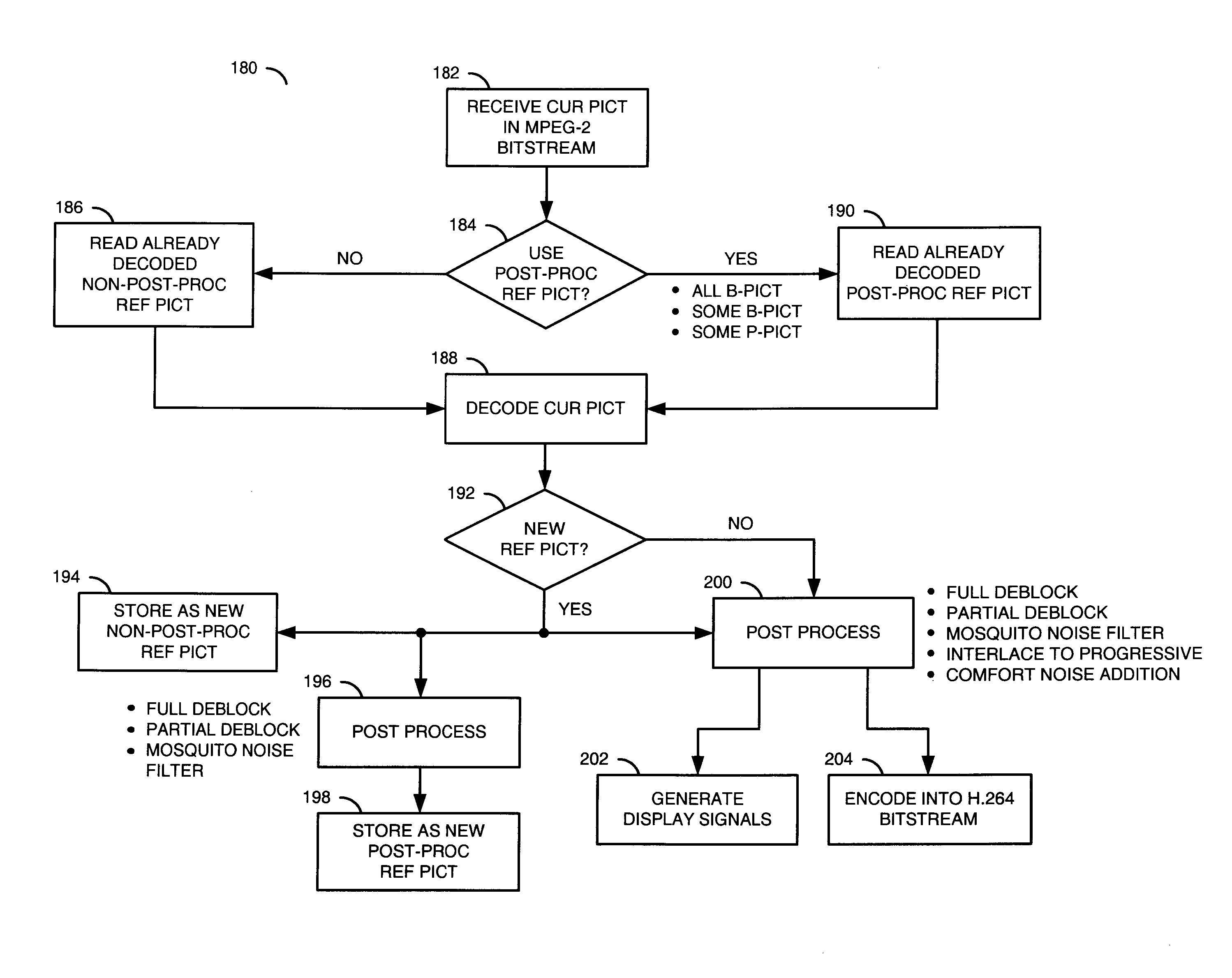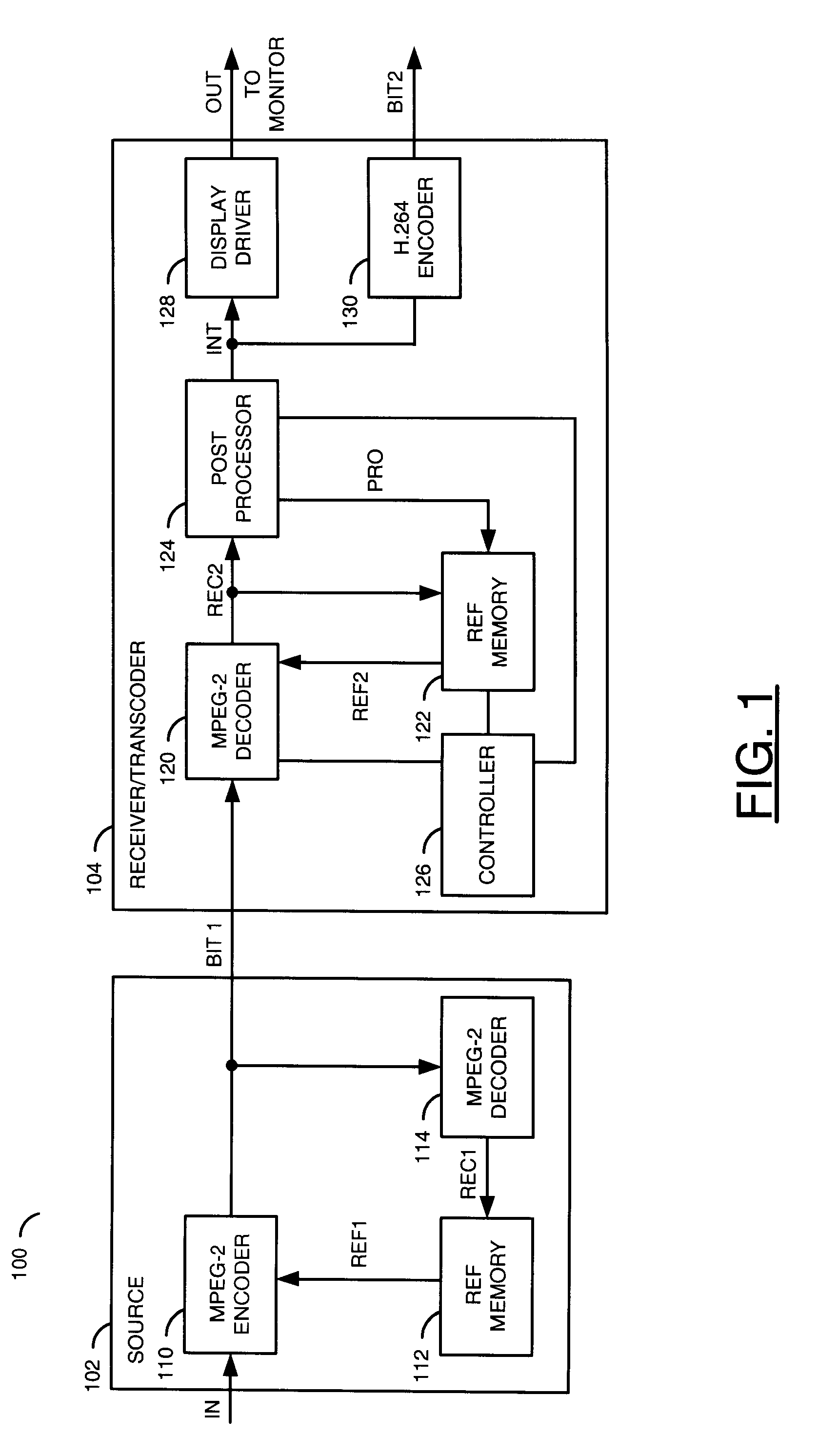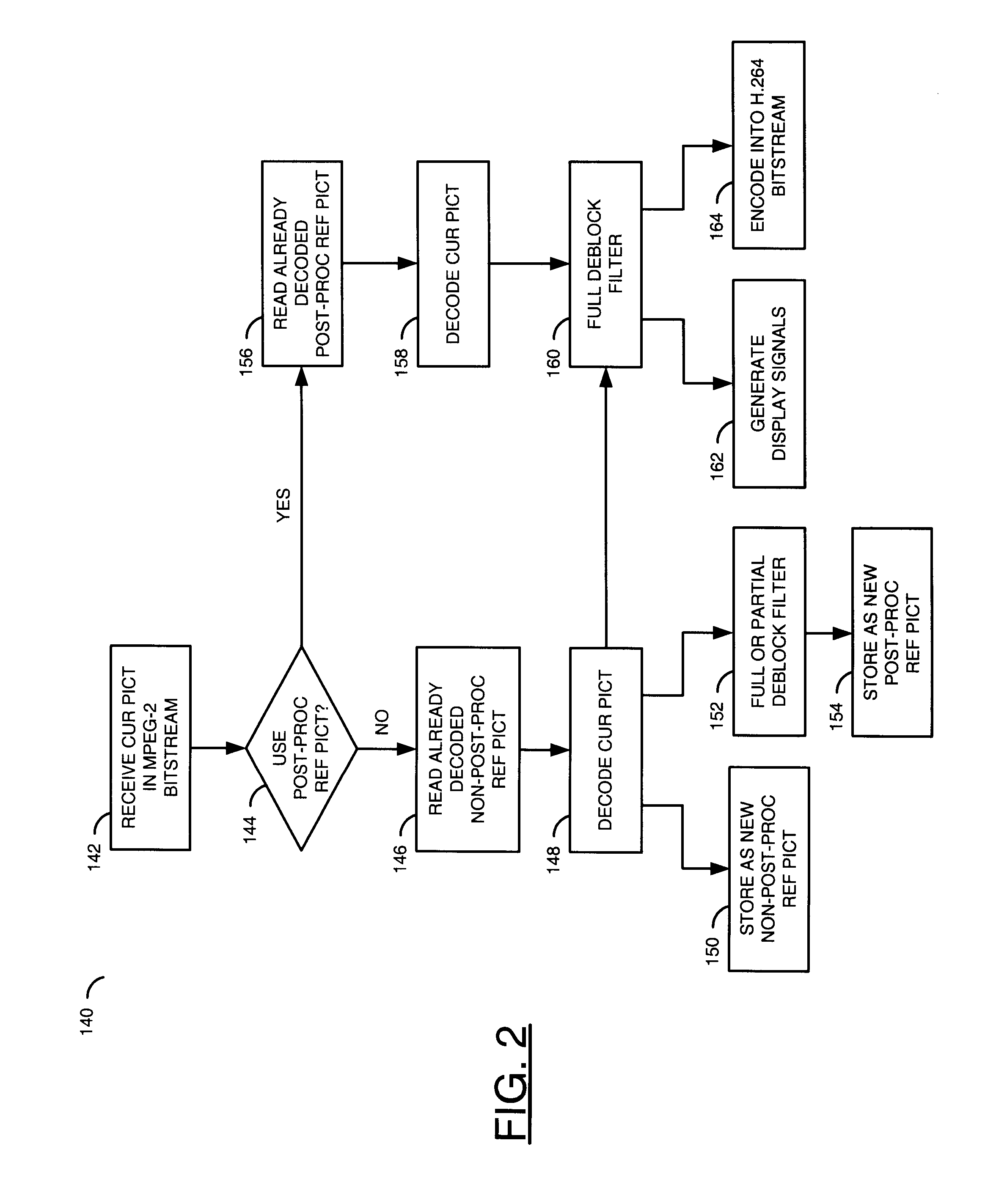Compressed non-reference picture reconstruction from post-processed reference pictures
a non-reference picture and reconstruction technology, applied in the field of digital video decoding, can solve the problems of introducing an unacceptable amount of drift in the decoded video, and reducing so as to reduce the visual quality of post-processed pictures, avoid drift accumulation, and reduce blocky artifacts
- Summary
- Abstract
- Description
- Claims
- Application Information
AI Technical Summary
Benefits of technology
Problems solved by technology
Method used
Image
Examples
Embodiment Construction
[0013]The present invention uses a current picture type to determine whether non-post-processed reference pictures or post-processed reference pictures are used during decoding operations. As such, two copies of each reference picture are generated and buffered in a reference memory to support motion compensation. The increased number of reference pictures is generally met in modern multicodec systems since the memory resource criteria (e.g., memory capacity, cycles, etc.) of alternative codecs in the system (e.g., H.264) are so much higher than that of existing blocky codecs (e.g., MPEG-2, MPEG-4 Part 2, Divx, etc.) that accommodating more reference pictures (e.g., reference fields and / or reference frames) typically does not incur an increase in system cost.
[0014]When decoding video, a receiver implementing the present invention generally considers the picture type being decoded. The picture types may include intra-pictures (I-pictures), predicted pictures (P-pictures) and bidirect...
PUM
 Login to View More
Login to View More Abstract
Description
Claims
Application Information
 Login to View More
Login to View More - R&D
- Intellectual Property
- Life Sciences
- Materials
- Tech Scout
- Unparalleled Data Quality
- Higher Quality Content
- 60% Fewer Hallucinations
Browse by: Latest US Patents, China's latest patents, Technical Efficacy Thesaurus, Application Domain, Technology Topic, Popular Technical Reports.
© 2025 PatSnap. All rights reserved.Legal|Privacy policy|Modern Slavery Act Transparency Statement|Sitemap|About US| Contact US: help@patsnap.com



